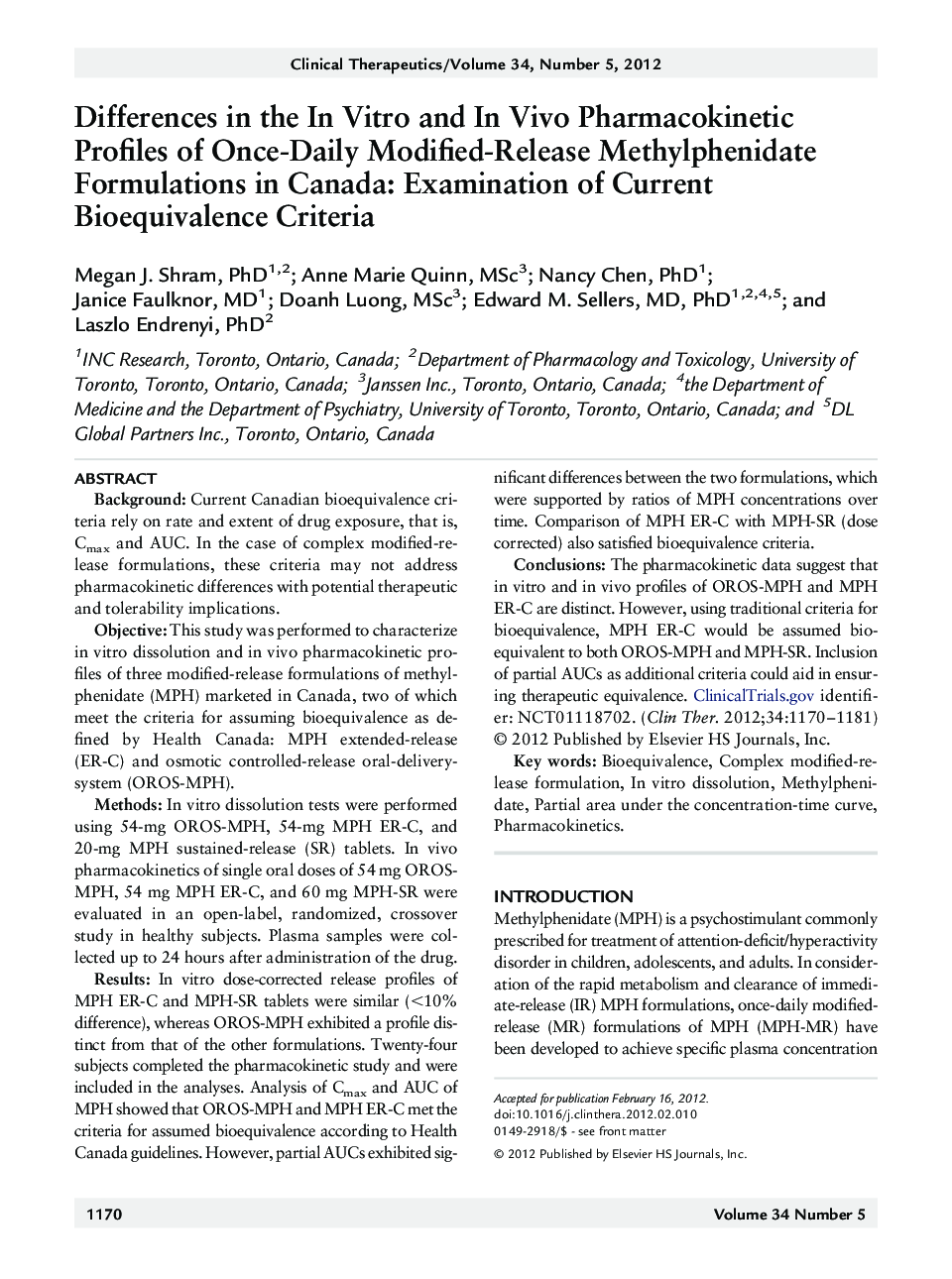| کد مقاله | کد نشریه | سال انتشار | مقاله انگلیسی | نسخه تمام متن |
|---|---|---|---|---|
| 2527889 | 1119945 | 2012 | 12 صفحه PDF | دانلود رایگان |

BackgroundCurrent Canadian bioequivalence criteria rely on rate and extent of drug exposure, that is, Cmax and AUC. In the case of complex modified-release formulations, these criteria may not address pharmacokinetic differences with potential therapeutic and tolerability implications.ObjectiveThis study was performed to characterize in vitro dissolution and in vivo pharmacokinetic profiles of three modified-release formulations of methylphenidate (MPH) marketed in Canada, two of which meet the criteria for assuming bioequivalence as defined by Health Canada: MPH extended-release (ER-C) and osmotic controlled-release oral-delivery-system (OROS-MPH).MethodsIn vitro dissolution tests were performed using 54-mg OROS-MPH, 54-mg MPH ER-C, and 20-mg MPH sustained-release (SR) tablets. In vivo pharmacokinetics of single oral doses of 54 mg OROS-MPH, 54 mg MPH ER-C, and 60 mg MPH-SR were evaluated in an open-label, randomized, crossover study in healthy subjects. Plasma samples were collected up to 24 hours after administration of the drug.ResultsIn vitro dose-corrected release profiles of MPH ER-C and MPH-SR tablets were similar (<10% difference), whereas OROS-MPH exhibited a profile distinct from that of the other formulations. Twenty-four subjects completed the pharmacokinetic study and were included in the analyses. Analysis of Cmax and AUC of MPH showed that OROS-MPH and MPH ER-C met the criteria for assumed bioequivalence according to Health Canada guidelines. However, partial AUCs exhibited significant differences between the two formulations, which were supported by ratios of MPH concentrations over time. Comparison of MPH ER-C with MPH-SR (dose corrected) also satisfied bioequivalence criteria.ConclusionsThe pharmacokinetic data suggest that in vitro and in vivo profiles of OROS-MPH and MPH ER-C are distinct. However, using traditional criteria for bioequivalence, MPH ER-C would be assumed bioequivalent to both OROS-MPH and MPH-SR. Inclusion of partial AUCs as additional criteria could aid in ensuring therapeutic equivalence. ClinicalTrials.gov identifier: NCT01118702.
Journal: Clinical Therapeutics - Volume 34, Issue 5, May 2012, Pages 1170–1181